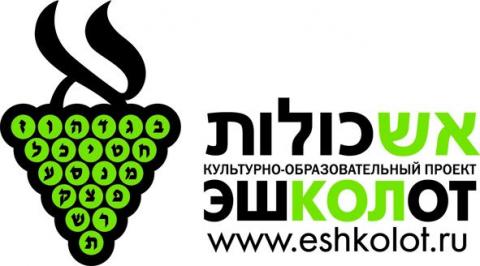War and Peace of Languages. Eskolot's Festival in Jerusalem
7.08.2017. 12:30, ONLINE
Lecture by the professor of comparative literature Ruth Wisse (Harvard University) is a part of Eshkolot Festival of Jewish Texts and Ideas «War and Peace of Languages: Linguistic History of Jerusalem» (Jerusalem, August 7-10, 2017)
Even as Hebrew became the unifying Jewish national language of Israel, Abraham Sutzkever turned Israel into the central “address” for Yiddish after the destruction of European Jewry. He did this in several ways: by establishing the Tel Aviv quarterly Di goldene keyt as the world’s leading publication of Yiddish literature, by welcoming Yiddish writers to the country and inspiring young talent in Yiddish writers already there, and through the power of his poems. The full effect of these efforts will depend on this and future generations.
The lecture is scheduled for August 7, 12.30 at Beit Avi Chai in Jerusalem (44 King George St.), entrance free.
The lecture will be streamed live on this page.
Prof. Wisse's talk is in English with simultaneous Russian translation.
8.08.2017.12:30, ONLINE
Lecture by the professor of linguistics Yehudit Henshke (University of Haifa) is a part of Eshkolot Festival of Jewish Texts and Ideas «War and Peace of Languages: Linguistic History of Jerusalem» (Jerusalem, August 7-10, 2017)
The «official» history of the revival of Hebrew as a national Jewish language is mostly focused on the contribution of European Jews to this revolutionary process. Meanwhile, professor of linguistics Yehudit Henshke, who conducted many research projects in modern Hebrew, demonstrates that Traditional-Mizrahi Hebrew heavily influenced by Judeo-Arabic vernaculars is one of the dominant sociolects in contemporary Israel. How can we discern the voice of Maghreb in the market places and narrow streets of Jerusalem?
The lecture is scheduled for August 8, 12.30 at Beit Avi Chai in Jerusalem (44 King George St.), entrance free.
The lecture will be streamed live on this page.
Prof. Henshke's talk is in Hebrew with simultaneous Russian translation.
9.08.2017. 15:00, ONLINE
Lecture by the professor of literature Roman Katsman (Bar-Ilan University) is a part of Eshkolot Festival of Jewish Texts and Ideas «War and Peace of Languages: Linguistic History of Jerusalem» (Jerusalem, August 7-10, 2017)
Prof. Roman Katsman offers an overview of the evolution of Agnon's philosophy of language. Usually Agnon's attitude to language is characterized in terms of deciphering his sources, intertextual games and philosophy of the «void» (hurban). In-depth analysis demonstrates that his philosophy of language evolved as a mythopoetical creativity along a trajectory, which is parallel to the mainstream of linguistic thought of XIX century.
The lecture is scheduled for August 9, 15.00 at Beit Avi Chai in Jerusalem (44 King George St.), entrance free.
The lecture will be streamed live on this page.
Prof. Katsman's talk is in Russian.
10.08.2017.12:30, ONLINE
Lecture by the linguist Miri Bar-Ziv Levy (Hebrew University) is a part of Eshkolot Festival of Jewish Texts and Ideas «War and Peace of Languages: Linguistic History of Jerusalem» (Jerusalem, August 7-10, 2017)
David Grossman’s book «Someone to Run With» (2000) features a colorful, fascinating and dynamic plot while enabling a meaningful gaze into the inner world of the leading characters. In 2006 it was turned into an internationally acclaimed movie.
The lecture by the linguist Miri Bar-Ziv Levy (Hebrew University) examines the representation of the spoken language in «Someone to Run With». In both genres different phenomena of spoken language are represented – in phonetics, morphology, syntax and discourse – and in both of them the language has a major role in shaping the characters and the situation. In the book a wider range of non-standard linguistic morphological and syntactical phenomena are represented, from both sides of the spectrum: super-standardon the one hand and sub-standard on the other. Miri Bar Ziv Levy's research shows that both in the book and in the film spoken language has a major role. However, both media use different aspects of the spoken language – phonetics, morphology, syntax and discourse – to fashion the images and features of characters and situations.
The lecture is scheduled for August 10, 12.30 at Beit Avi Chai in Jerusalem (44 King George St.), entrance free.
The lecture will be streamed live on this page.
The talk is in Hebrew with simultaneous Russian translation.

